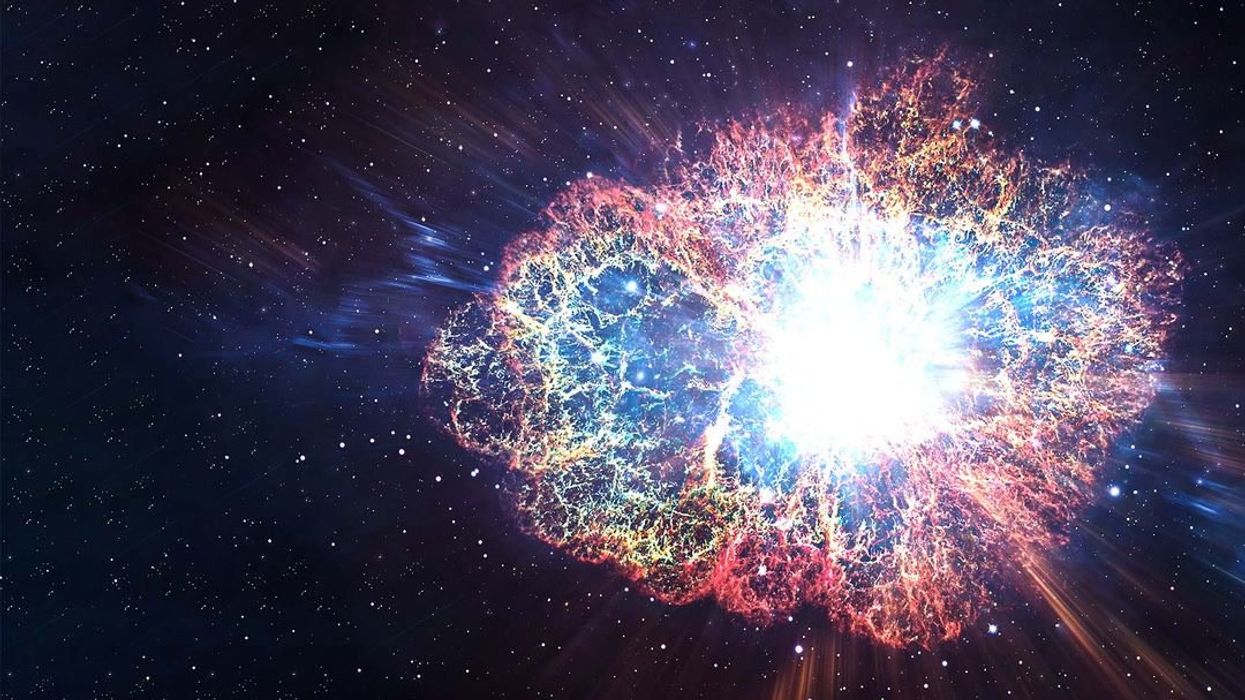Science & Tech
Harriet Brewis
May 14, 2024
What If the Big Bang Wasn't the Beginning of the Universe?
Underknown / VideoElephant
A giant structure lurking in the distant Universe is fundamentally undermining our understanding of how the cosmos evolved.
Astronomers located the unimaginably large, almost perfect ring of galaxies, in light that had travelled for 6.9 billion years to reach us.
The Big Ring, as the structure is now known, measures some 1.3 billion light years in diameter, and is so significant that it could lead to the rewriting of our model of the universe.
The discovery, led by astronomer Alexia Lopez of the University of Central Lancashire, was presented to the American Astronomical Society in January.
It's the second giant structure identified by Lopez and her colleagues after the so-called Giant Arc, which is located in the same part of the sky, at the same distance away.
When the arc's discovery was announced in 2021, it was met with bewilderment by astronomers. A bewilderment that has only been compounded by the Big Ring.
"Neither of these two ultra-large structures is easy to explain in our current understanding of the universe," Lopez said in a statement.
"And their ultra-large sizes, distinctive shapes, and cosmological proximity must surely be telling us something important – but what exactly?"

One possibility is that the Big Ring is related to what are known as Baryon Acoustic Oscillations (BAOs).
BAOs are created by oscillations in the early universe and today should appear, statistically at least, as spheres, Lopez explained.
These giant, circular arrangements of galaxies which appear throughout space are, in essence, the fossils of acoustic waves which froze when space became so vast that the waves could no longer travel, as Science Alertnotes.
However, the researchers concluded that the Big Ring can’t be a BAO because it is “too large and not the right shape”, Lopez said.
So, what, then, is it? And what does it mean for the Cosmological Principle, which states that, in all directions, any given section of space should look basically the same as all other section of space?
"We expect matter to be evenly distributed everywhere in space when we view the universe on a large scale, so there should be no noticeable irregularities above a certain size," Lopez explained.
"Cosmologists calculate the current theoretical size limit of structures to be 1.2 billion light-years, yet both of these structures are much larger – the Giant Arc is almost three times bigger and the Big Ring's circumference is comparable to the Giant Arc's length."
Ultimately this all poses a big problem for how we understand the evolution of the universe.
It has, therefore, fallen on experts to provide alternatives to the standard model of cosmology.
A Big Ring on The Sky: AAS 243rd Press conference. Alexia M. Lopez 2nd Discoverywww.youtube.com
One such model, proposed by Nobel Prize-winner Sir Roger Penrose, is known as conformal cyclic cosmology (CCC).
This theory posits that the universe goes through endless Big Bang expansion cycles, meaning ring structures are inevitable.
Another possibility is that the structures are a type of “topological defect” in the fabric of space-time known as cosmic strings.
Another Nobel-prize winner, Jim Peebles, recently hypothesised that cosmic strings could have a role in the origin of some other anomalies in the large-scale distribution of galaxies.
These strings are proton-wide wrinkles that emerged in the early universe as space-time stretched, then froze into place, Science Alert reports.
And whilst there currently is scant physical proof of them, the theoretical evidence is pretty compelling.
At any rate, the mystery as to what the Big Ring and Giant Arc are, and what this means for cosmology, remains unsolved.
Now, experts are hoping to find more such arrangements of galaxies, hidden in plain sight, to see if they yield clearer insights into their origins.
"From current cosmological theories we didn't think structures on this scale were possible," Lopez said.
"We could expect maybe one exceedingly large structure in all our observable universe. Yet, the Big Ring and the Giant Arc are two huge structures and are even cosmological neighbours, which is extraordinarily fascinating."
Sign up for our free Indy100 weekly newsletter
Have your say in our news democracy. Click the upvote icon at the top of the page to help raise this article through the indy100 rankings
Top 100
The Conversation (0)














